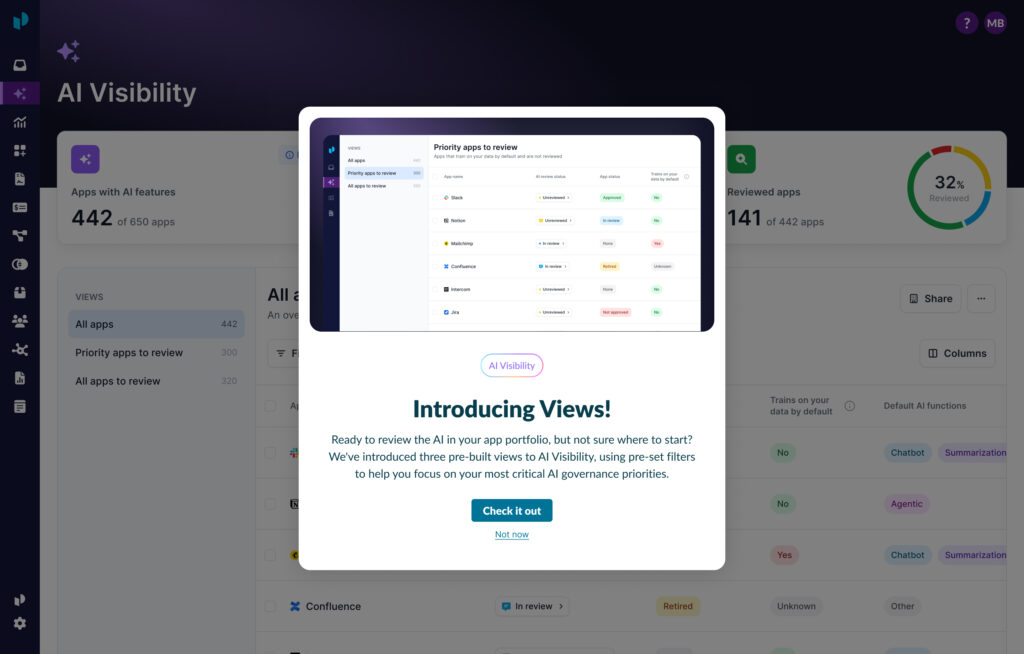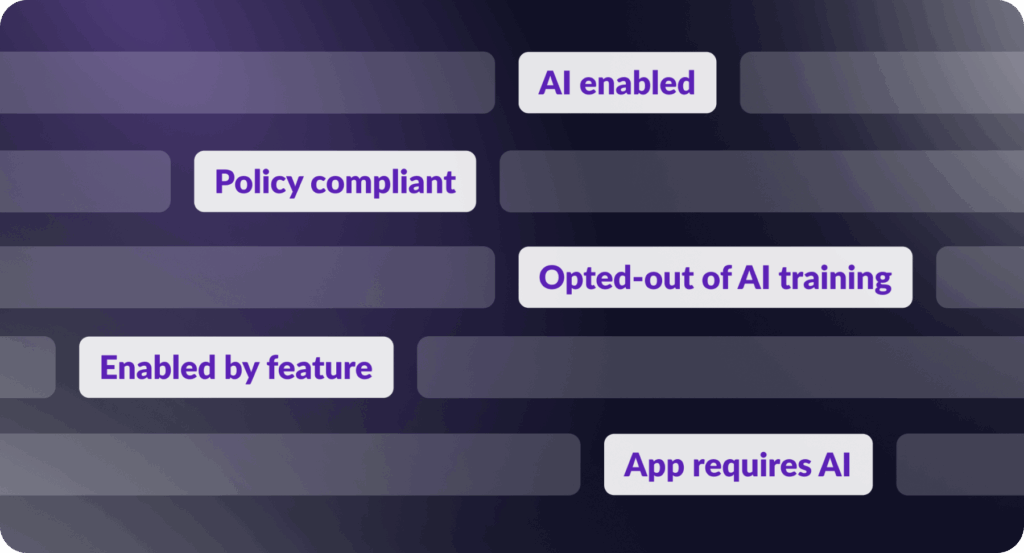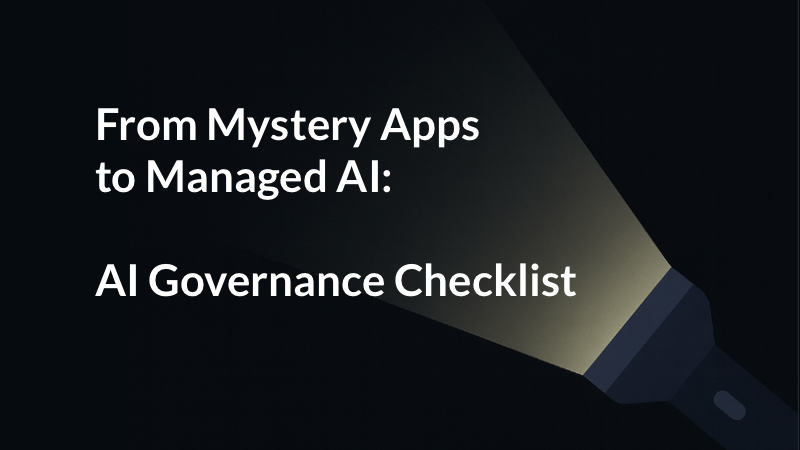
What is spend management?
Not sure what spend management is? Here you’ll learn what spend management is and how it can help you and your business control costs, mitigate risk, and improve productivity.
With increasing spend and a deluge of data, spreadsheets, meetings, and calendar reminders just don’t provide the level of visibility and control needed to effectively manage budgets. Leading organizations are turning to spend management to provide support, automation, insights and benchmarks to bring more spend under management and reclaim their time spent controlling sprawl and combating risk.
Spend management is a solution in which an organization brings all of its spend data (SaaS spend, employee expenditures, shadow spend, contracts, application usage data, license consumption, and more) into one centralized platform to assess suppliers, contracts, and expenses to make informed decisions regarding purchases, renewals, and management of expenditures and then take action on those decisions. An organization’s strategy for spend management should include stakeholders from procurement, finance, IT, and line of business leaders to ensure comprehensive visibility into all areas of spend to optimize costs, mitigate risks, and improve business efficiency.
As Gartner surmised, “Spend management is about maximizing value from company spend while decreasing costs, mitigating financial risk and improving supplier relationships”
5 types of spend management
Spend management encompasses multiple types of spend and cost management activities including:
- Expense management: the process of managing costs initiated by employees. Both sanctioned and outside of policy (also known as “shadow spend”).
- Vendor/supplier management: the process of finding and selecting vendors, negotiating contracts, maintaining relationships, and ensuring goods/services are delivered without issue.
- SaaS management: a process that enables businesses to control all aspects of SaaS (software as a service) across the organization — from maintaining full visibility into what apps are in use, how they’re used to proactively managing spend, renewals, compliance, and more.
- Application access management: the process of managing and securing user access to an organization’s applications. It includes maintaining data security and regulating who can access sensitive information.
- Purchase management (or intake-to-procure): the process of managing goods and services an organization needs to function by implementing a process to streamline purchasing, while ensuring efficient cross-functional collaboration.
Why do it?
Manually searching for data to fully understand an organization’s spend portfolio can be time consuming, risky, and is often incomplete or outdated. This results in missed opportunities to save. In 2023 the average organization spent $9,643 per employee on SaaS alone, with average portfolio size reaching a whopping 473 apps for enterprise companies and 335 apps for mid-market. With so much money on the line, 78% of Chief Procurement Officers (CPOs) listed reducing operational costs as a high priority in a recent survey. However, reducing those operational costs is not as simple as eliminating the highest line items and hoping it does not negatively impact the business. Instead, you must understand where money is being put to good use, and where it is wasted.
Cutting spend and working fast can be a recipe for disaster if done without quality data to inform cost cutting decisions. While raw data can be useful, to ensure efficiency, it is more critical to have access to insightful data that is easily actionable. CPO’s are cognizant of this, with 65% listing “generating actionable insights to better support decision making” as high priority. However, the increasing sprawl of contracts, renewal timelines, shadow spend and more, makes it hard to efficiently gather data to make those informed decisions while also mitigating potential risk. This lack of efficiency is detrimental, with 72% of CPOs prioritizing reducing manual tasks to spend time on more impactful tasks.
Without a spend management solution, an organization becomes vulnerable to ballooning operational costs, lost opportunities to save, time lost gathering incomplete and hard to action data all while risking security and compliance.
What can spend management do for you?
- Improve productivity – automate error prone and tedious manual processes and create workflows so you can spend more of your time delivering value on strategic projects. As the saying goes; work smarter, not harder.
- Control spend – oversee what is being bought, by who, and for how much, while also encouraging employees to use existing tools to minimize redundancies.
- Reduce risk – reduce shadow IT, stop third-party risk at the door, and track undiscovered purchases to bring them under management, while maintaining compliance across your entire portfolio.
- Encourage effective collaboration – remove friction around decision making processes so teams get faster time to value.
- Deliver actionable insights – access granular usage data by app, benchmarks, license rightsizing, and easily identify areas for optimization.
What does a solution look like?
Spend management may sound simple, but those who’ve tried to investigate and control spend know what a tedious and frustrating process it can be. With 80% of SaaS agreements being one-year contracts, renewals are never ending. And without visibility into pricing benchmarks or a full understanding of how often a tool is used, it becomes near impossible to accurately control spend and negotiate favorable contracts. With all this in mind, what should a good spend management solution look like to lift weight off your shoulders and provide you with the data you and your team need to get actionable insights? A spend management solution should be able to:
- Consolidate all spend and contract data into one comprehensive place with integrations into your critical applications.
- Provide full visibility into expenditures including usage data, negotiation benchmarks, and purchase redundancies.
- Help build and automate processes around buying, managing, and renewing. This saves time and ensures value, while maintaining security standards.
3 steps to implement effective spend management today
Now that you know what spend management is, here are three steps you can take to ensure the adoption of your spend management strategy across your business.
- Bring all of your data into a single source of truth: Have one place to see everything you own, understand application or spend overlap, while tracking what’s coming up for renewal. Successful teams often start this first critical step by implementing a Spend Management platform to ensure a trusted, unified source of data and insight for all teams — which in addition to the above, empowers teams with usage data and the ability to control app access to curb sprawl and spend before it starts.
- Build repeatable renewal processes that encourage collaboration: Once you have a single source of truth, track upcoming renewals and build a proactive process that uses that usage and spend data to bring teams together and engage in smarter negotiations. If you’ve implemented a Spend Management Platform, best of breed tools use AI to give you actionable insights and benchmarks.
- Expand process to new purchases: Implement repeatable and customizable processes to buy net-new tools. Know what you have, where there’s crossover, what you truly need and have budget for, so you can spend more time collaborating around information and making buying decisions that deliver value. With a Spend Management Platform, it’s simple to scale those processes from intake to purchase using workflows paired with a data-first process.
About Productiv:
Productiv is the IT operating system to manage your entire SaaS and AI ecosystem. It centralizes visibility into your tech stack, so CIOs and IT leaders can confidently set strategy, optimize renewals, and empower employees.





